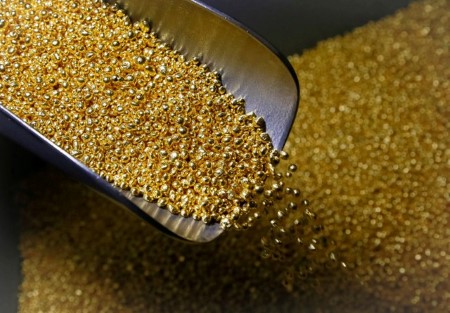




Philippines Trade Update: Exports momentum continues
 DOWNLOAD
DOWNLOAD

Quarterly Economic Growth Release: More BSP cuts to come
 DOWNLOAD
DOWNLOAD

Monthly Economic Update: Fed catches up
 DOWNLOAD
DOWNLOAD


Gold scales 3-week peak as dollar, yields retreat

Oct 4 (Reuters) – Gold hit a three-week high on Tuesday, spurring gains for all precious metals, as the dollar and US Treasury yields moved further from multi-year highs and revived appeal for the zero-yielding bullion.
Spot gold rose 0.5% to USD 1,707.20 per ounce by 0725 GMT, having earlier touched its highest since Sept. 13 at USD 1,710.39.
US gold futures were up 0.9% to USD 1,717.60.
The dollar index fell by 0.5%, making gold cheaper for overseas buyers, and the US 10-year Treasury yields also retreated.
The weakening dollar index and worries over a recession in the US and Europe are driving interest back into gold, said Sugandha Sachdeva, vice president of commodity and currency research at Religare Broking, adding renewed inflows into gold exchange-traded funds (ETF) show revived confidence.
Holdings of SPDR Gold Trust GLD, the world’s largest gold-backed ETF, saw its biggest one-day inflow since June on Monday.
The focus has turned to US non-farm payrolls due later this week for signals on the Federal Reserve’s rate-hike path.
Economic data on Monday showed a slowdown in manufacturing activity, hinting at the impact of the Fed’s aggressive policy tightening. “The (gold) market may stabilise anywhere between $1,685 and $1,705 ahead of the jobs data,” Stephen Innes, managing partner at SPI Asset Management, said.
Although gold is seen as a hedge against economic uncertainties, US rate hikes increased the opportunity cost of holding bullion that pays no interest.
Spot silver climbed 1% to USD 20.96 per ounce, having earlier hit a peak since June.
“Silver was very undervalued for a long time and now, as risk sentiment is returning to the market, we are seeing a lot of buying interest coming back,” Religare’s Sachdeva said, adding green energy initiatives are expected to support demand for the metal.
Palladium jumped as much as 4.2% and was last up 3.3% at USD 2,294.79, while platinum was 1.2% higher at USD 912.85.
(Reporting by Eileen Soreng in Bengaluru; Editing by Sherry Jacob-Phillips and Barbara Lewis)
This article originally appeared on reuters.com





 By Reuters
By Reuters